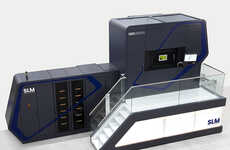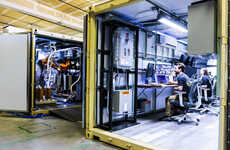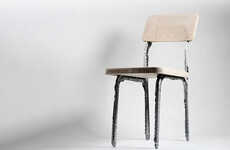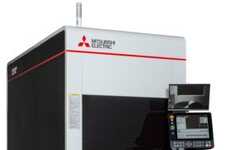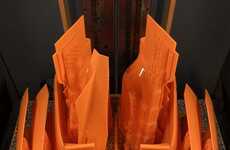
Norsk Titanium Has Developed a 3D Printing Process for Titanium Parts
References: norsktitanium & reuters
Should companies uncover methods of 3D printing with materials more durable than the soft plastics that get used in consumer printers, the technology could be a boon for industry as a whole, and Norsk Titanium has found just such a methodology. The company is able to 3D print titanium units, and it plans to use that system to generate airplane parts for the Boeing 787 Dreamliner jet airliner.
Norsk Titanium's 3D-printed airplane parts were recently approved for use by the Federal Aviation Authority after a rigorous testing phase. This approval is massive for Boeing, as the incredibly efficient manufacturing process has the potential to save the company between $2 million and $3 million per jet.
Boeing and Norsk Titanium expect to start using the 3D-printed parts in jets in 2018.
Norsk Titanium's 3D-printed airplane parts were recently approved for use by the Federal Aviation Authority after a rigorous testing phase. This approval is massive for Boeing, as the incredibly efficient manufacturing process has the potential to save the company between $2 million and $3 million per jet.
Boeing and Norsk Titanium expect to start using the 3D-printed parts in jets in 2018.
Trend Themes
1. 3d-printed Aerospace Components - Advancements in 3D printing technology for producing airplane parts create opportunities for faster production, cost savings, and improved efficiency
2. Titanium Additive Manufacturing - Innovative 3D printing processes for materials like titanium offer a major breakthrough in aerospace manufacturing and engineers should consider adopting additive manufacturing technology
3. 3D Printing in Aviation Industry - The increased use of 3D-printed parts in the aviation industry is a sign of the growing trend of 3D printing and additive manufacturing across industries
Industry Implications
1. Aerospace and Defense - 3D-printed aerospace components offer an opportunity to reduce costs and lead time for aerospace and defense manufacturers
2. Manufacturing - Innovative 3D printing processes could change the way the manufacturing industry operates, particularly in terms of how parts are produced and how the supply chain operates
3. Engineering Services - The development of 3D printing technology for industrial use is driving the need for specialized engineering services to support and integrate additive manufacturing into various industries
3.2
Score
Popularity
Activity
Freshness

